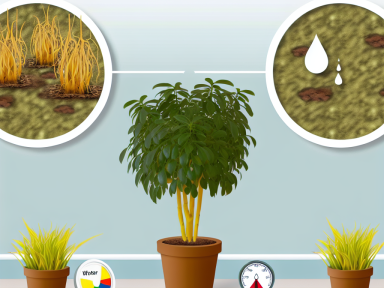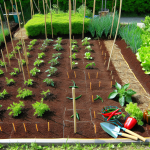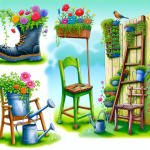The Hidden Dangers of Overwatering
Overwatering is a common mistake that can lead to a variety of problems in your garden. As an experienced gardener, it’s essential to recognize the signs of overwatering and understand how to maintain proper moisture levels to ensure your plants thrive.
Signs of Overwatering
- Wilting: Contrary to popular belief, wilting can be a sign of both underwatering and overwatering. When plants are overwatered, their roots can become waterlogged and unable to take in oxygen, leading to wilting.
- Yellowing Leaves: Plants may develop yellow leaves when they are receiving too much water. This yellowing usually starts at the bottom of the plant and moves up.
- Edema: Overwatered plants can develop edema, which is characterized by small, blister-like spots on the leaves caused by cells absorbing too much water and then bursting.
- Root Rot: Excess moisture can cause roots to rot, turning them brown or black and mushy. This severely impairs the plant’s ability to absorb nutrients.
- Fungal Growth: Overly wet soil encourages fungal growth, which can lead to diseases such as powdery mildew or damping-off in seedlings.
Maintaining Proper Moisture Levels
- Check Soil Moisture: Before watering, check the soil moisture levels. Insert your finger about an inch into the soil. If it feels dry, it’s time to water. If it feels moist, wait a day or two.
- Watering Schedule: Establish a watering schedule based on the specific needs of your plants. For most plants, watering once or twice a week during the growing season is sufficient. Adjust this based on weather conditions and plant requirements.
- Water Deeply: When you water, do so deeply to encourage root growth. Shallow watering only wets the surface and can result in weak, shallow roots.
- Use Mulch: Mulching helps retain soil moisture, reducing the need for frequent watering. It also helps regulate soil temperature and suppress weeds.
- Choose the Right Soil: Well-draining soil is crucial to prevent water from accumulating around roots. Amend heavy clay soils with organic matter such as compost or peat moss to improve drainage.
- Containers and Drainage: For container gardening, ensure pots have drainage holes to allow excess water to escape. Use a good-quality potting mix that drains well.
- Rainfall and Weather Considerations: Always consider recent rainfall and weather conditions. It’s easy to forget that nature often provides enough water, negating the need for additional watering.
By recognizing the signs of overwatering and implementing proper watering techniques, you can keep your garden healthy and avoid the pitfalls associated with excessive moisture.




GIPHY App Key not set. Please check settings